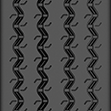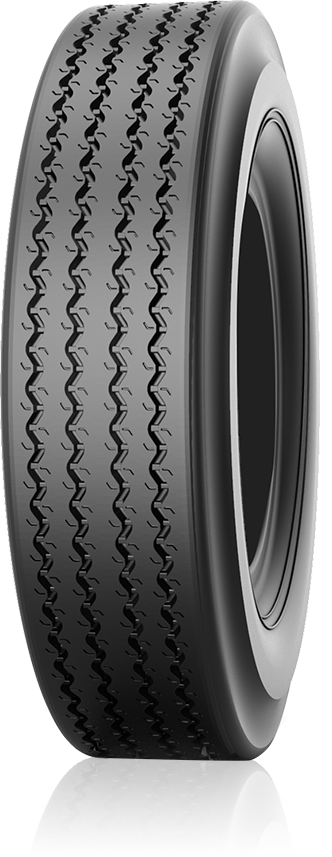.jpg)
Busting top 3 myths about retreading in India!
The Retreading industry has been around for as many years as the tyre industry, and so do the myths about it. It is no surprise if you come across a fleet owner cursing retreading and calling it a total failure because of some bad experience he/she had a long time ago. Retreading has been bombarded with many questions and certain doubts regarding its performance against new tyres. This juxtaposition has been in place for a long now. More and more fleet owners are siding with retreading over time.
So, what about these doubts? Are they for real, or are they myths? Well, we can assure you they are nothing but myths. Here we are going to bust the top 3 myths that have haunted fleet owners over the years with simple straight facts.
Myth 1 – Retreaded tyres are not as safe as a new tyre
Fact- Retreaded tyres are as safe as new tyres
Tyre failure is a truth; a tyre bursting on road can cause havoc, even turning in a life loss in the worst cases. We need to understand that more than half a dozen factors cause such accidents- under inflation, over inflation, mismatch of tyres, faulty repairs, misalignment of tyres, severe cuts to the sidewall or the crown, exceeding load limits or speed limits, etc.
All types of tyres, new or retreaded, are equally prone to fall prey to any of these factors and cause accidents. Scientifically, there is no reason that a retreaded tyre should have any higher propensity to fail than new tyres due to any of these factors.
It is psychological aftermath that if the accident is caused by a retreaded tyre we tend to blame it on the retreading and not the real factors. So next time, if safety comes to your mind, remember to take equally good care of both new and retreaded tyres, and they will be equally safe.
Just to state some facts- nearly every major airline trusts retreads. They are regularly and widely used in services involving human lives such as school buses, ambulances, and fire-fighting trucks.
Myth 2 – Retreaded tyres do not perform as good as new tyres
Fact- Retreaded tyres perform as good as new tyres
Have you come across somebody who could not say lesser about retreaded tyres not performing as good as new tyres? You may have. It is one of the most prevalent myth that retreaded tyres do not perform as good as new tyres.
We must understand the factors that affect the performance of a tyre and then only we can find out if those factors affect retreaded tyres any differently than new tyres. The performance can be measured in terms of mileage, cut-chip resistance, cooler running, or better fuel efficiency. It varies from one new tyre to another new tyre , from one retreaded tyre to another retreaded tyre and one new tyre to one retreaded tyre.
To make sure the performance of your retreaded tyre is as good as new tyre, choose a perfectly fit casing, use the correct design pattern and the suitable tread rubber compound, and get it retreaded at a branded workshop. If you do so, then there is no reason your retreaded tyre will perform any lesser than that of a new tyre.
We can also understand it from a small example- If NSD if your new radial tyre is 18mm, and the tread rubber you choose has a NSD of 12mm, then how can you similar mileage from the retreaded tyre with 33% lesser rubber volume. So, choose wisely and precisely; your retreaded tyre will not disappoint you.
Myth 3 – Retreading leads to premature failure
Fact- Retreading is not responsible for any kind of tyre failure
It can be surprising to know that the scarp rate of new tyres runs from 20-40%, which is a huge loss to any fleet owner. Why do these tyres fail? Tyres are exposed to many external and internal factors, which can seriously damage them and result in failure.
The list of such factors includes- These factors are responsible for a tyre failure, whether it is a new tyre or a retreaded one. Retreaded tyres get exposed to all these external and internal factors equally as new tyres.
There are also a few added factors when it comes to retreaded tyres that can cause failure. These are-
-
Separation of the tread rubber from the casing
-
Development of cracks in the tread rubber
-
Casing bursts while in service
We need to understand the situation where the above-listed factors can come into play.
A retread casing can see separation if the quality of retreading materials used are local or sub-par quality, or the retreading process was faulty, or the machinery used to retread the tyre was of low output. Similarly, cracks can develop in a retreaded rubber if a low-quality material is used or an incorrect tread design or rubber compound is chosen.
Most often, it is seen that when a retreaded casing bursts, it leaves an impression on the fleet owners that retreading is prone to premature failures. A retreaded casing bursts because the casing was weak or damaged and should have been rejected in the first place. In all other cases, lack of proper tyre maintenance and care are the main culprits of failure. Whether it is brand new or retreaded, a poorly maintained tyre will only last so long.
Indag recommends the use of its 10-Step Retreading process, which considers meticulous inspection of tyre casing, use of high-quality retreading materials, and proper quality checks to provide a retreaded tyre, which does not breakdown early and performs just as good as a new tyre.
You can visit the following link of Tyre Retread and Repair Information Bureau (TRIB), which has listed comprehensive reports carried out by the various government and private organizations, which will just go on to support the above ‘TRUTHs’ about retreading and debunk the various MYTHs prevalent in the industry - https://www.retread.org/government-studies
<< Previous | Next >>










